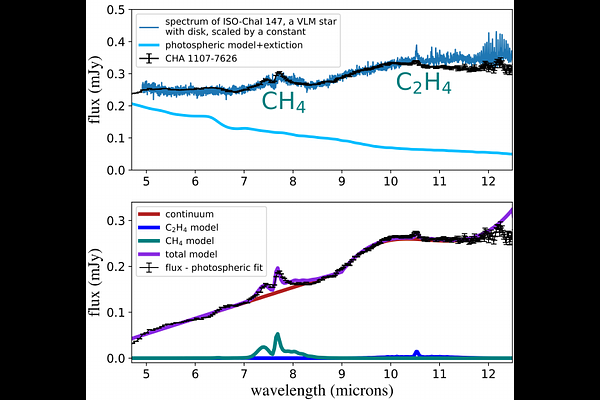Detection of Hydrocarbons in the Disk around an Actively-Accreting Planetary-Mass Object

Detection of Hydrocarbons in the Disk around an Actively-Accreting Planetary-Mass Object
Laura Flagg, Aleks Scholz, V. Almendros-Abad, Ray Jayawardhana, Belinda Damian, Koraljka Muzic, Antonella Natta, Paola Pinilla, Leonardo Testi
AbstractWe present the 0.6--12-micron spectrum of Cha\,1107-7626, a 6-10 Jupiter-mass free-floating object in the $\sim$2\,Myr-old Chamaeleon-I star-forming region, from observations with the NIRSpec and MIRI instruments onboard the James Webb Space Telescope. We confirm that Cha\,1107-7626 is one of the lowest-mass objects known to harbor a dusty disk with infrared excess emission at wavelengths beyond 4 microns. Our NIRSpec data, and prior ground-based observations, provide strong evidence for ongoing accretion through Hydrogen recombination lines. In the mid-infrared spectrum, we detect unambiguously emission lines caused by methane (CH$_\mathrm{4}$) and ethylene (C$_\mathrm{2}$H$_\mathrm{4}$) in its circum-substellar disk. Our findings mean that Cha 1107-7626 is by far the lowest-mass object with hydrocarbons observed in its disk. The spectrum of the disk looks remarkably similar to that of ISO-ChaI 147, a very low mass star with a carbon-rich disk that is 10 to 20 times more massive than Cha\,1107-7626. The hydrocarbon lines can be accounted for with a model assuming gas temperatures of a few hundred Kelvin in the inner disk. The obvious similarities between the spectra of a low-mass star and a planetary-mass object indicate that the conditions in the inner disks can be similar across a wide range of central object masses.